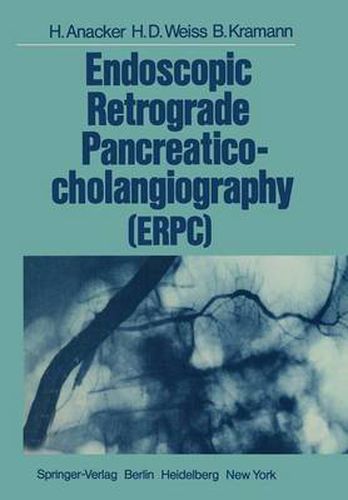Readings Newsletter
Become a Readings Member to make your shopping experience even easier.
Sign in or sign up for free!
You’re not far away from qualifying for FREE standard shipping within Australia
You’ve qualified for FREE standard shipping within Australia
The cart is loading…






This title is printed to order. This book may have been self-published. If so, we cannot guarantee the quality of the content. In the main most books will have gone through the editing process however some may not. We therefore suggest that you be aware of this before ordering this book. If in doubt check either the author or publisher’s details as we are unable to accept any returns unless they are faulty. Please contact us if you have any questions.
The roentgenologic visualization of excretory ducts of a secreting organ is a longe-stablished diagnostic method in roentgenology. For a long time, radiologists have felt the need to establish a method for filling the excretory duct system of the pancreas with contrast material, in the way that intravenous retrograde urography is used to diagnose pathologic changes such as displacement of the renal collecting system or of the urethra. This need to establish a method became more urgent the more the pancreas resisted conventional roentgenologic clinical di- agnostic methods. From time to time in peroperative or postoperative cholangiography mostly incomplete reflux into the pancreatic duct in 10-14% was observed (Stiller, 1948; San Julian und Pascual y Megias, 1952; Wapshaw, 1955; Bergkvist und Seldinger, 1957). However, there was no possibility of obtaining reliable and complete opacification of the pancreatic duct. Peroperative Pancreaticography It was in 1951 when Leger and Arway achieved this goal, though only by surgery. It should be mentioned that, when performing their first peroperative examination, these French surgeons already had the impression, that cannulation of the pancreatic duct was easier than cannulation of the common bile duct. This observation has been con- firmed by hundreds of examinations after ERPC had been established for several years; however, up till now this phenomenon has not been sufficiently explained. During the following years, peroperative pancreaticography develop- ed into a routine examination, above all by Doubilet et al.
$9.00 standard shipping within Australia
FREE standard shipping within Australia for orders over $100.00
Express & International shipping calculated at checkout
This title is printed to order. This book may have been self-published. If so, we cannot guarantee the quality of the content. In the main most books will have gone through the editing process however some may not. We therefore suggest that you be aware of this before ordering this book. If in doubt check either the author or publisher’s details as we are unable to accept any returns unless they are faulty. Please contact us if you have any questions.
The roentgenologic visualization of excretory ducts of a secreting organ is a longe-stablished diagnostic method in roentgenology. For a long time, radiologists have felt the need to establish a method for filling the excretory duct system of the pancreas with contrast material, in the way that intravenous retrograde urography is used to diagnose pathologic changes such as displacement of the renal collecting system or of the urethra. This need to establish a method became more urgent the more the pancreas resisted conventional roentgenologic clinical di- agnostic methods. From time to time in peroperative or postoperative cholangiography mostly incomplete reflux into the pancreatic duct in 10-14% was observed (Stiller, 1948; San Julian und Pascual y Megias, 1952; Wapshaw, 1955; Bergkvist und Seldinger, 1957). However, there was no possibility of obtaining reliable and complete opacification of the pancreatic duct. Peroperative Pancreaticography It was in 1951 when Leger and Arway achieved this goal, though only by surgery. It should be mentioned that, when performing their first peroperative examination, these French surgeons already had the impression, that cannulation of the pancreatic duct was easier than cannulation of the common bile duct. This observation has been con- firmed by hundreds of examinations after ERPC had been established for several years; however, up till now this phenomenon has not been sufficiently explained. During the following years, peroperative pancreaticography develop- ed into a routine examination, above all by Doubilet et al.